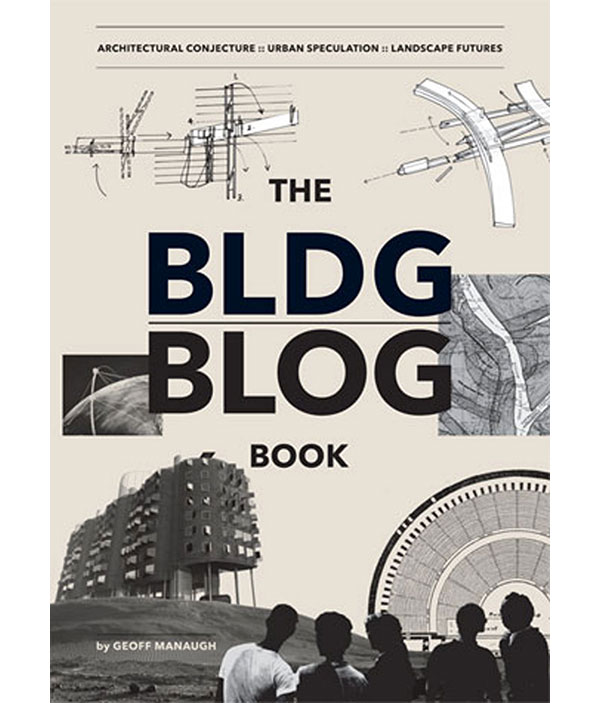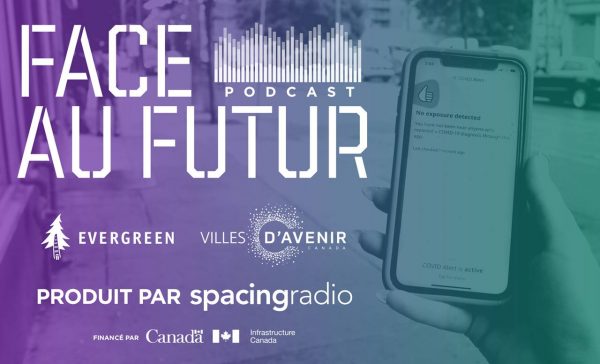
Author: Geoff Manaugh (Chronicle Books, 2009)
“What is architecture?” is one of those often joked about yet fundamental questions in architecture and design schools around the world. Over the centuries, hundreds of people – influential and otherwise – have written thought-provoking texts on why and how to build the world(s) we inhabit.ô  From Vitruvius to Italo Calvino, Gaston Bachelard to the Wachowski brothers, there is no shortage of architectural visions. Naturally, it was only a matter of time before Geoff Manaughô threw his hat into the ring.
From Vitruvius to Italo Calvino, Gaston Bachelard to the Wachowski brothers, there is no shortage of architectural visions. Naturally, it was only a matter of time before Geoff Manaughô threw his hat into the ring.
For those not too familiar with architectural resources in cyberspace, Manaugh is the creator of the BLDG BLOG: Architectural Conjecture, Urban Speculation, Future Landscapes. Begun in 2004, the site was his reaction to the limited academic vision of architecture. With a strong interest in science, literature, gaming, and pop futurismãamong other thingsãthe blog explores the intersection of these themes with implications for architecture. As made explicit in the blog tagline, “architecture” is much more broadly defined to include all human constructed environments. Over time, Manaugh’s lucid prose and quirky topics have gathered awards, an international crowd of followers….and, of course, a book.
Although there is a definitely a direct connection between the BLDG BLOG and its printed counterpart, the book isn’t a straight blog-to-book adaptation. Instead, it’s composed of revised, elaborated and more developed blog posts that have been strung together as a series of subsections that create larger chapters devoted to a single theme. In other words, there’s quite a bit of new content.
That said, each subsection follows the classic Manaugh formula: beginning with some science news or technological development, followed by musings on some related literature or pop cultural phenomenon and ending with a a speculation with its relationship to architecture and the built environment. These are supplemented by several tasty morsels of related sidebars and mini-chapters – from interviews with interesting personalities to bizarre accounts of technologies and initiatives worldwide. This takes up over a quarter of the book, in fact (about 80 pages worth).
Although the vast content of the BLDG BLOG could easily require a hefty package, the book is simply organized into five chapters – Architectural Conjecture/Urban Speculation, The Underground, Redesigning the Sky, Music Sound Noise, and Landscape Futures.
As with most other books, the first chapter introduces the motivation behind both the BLDG BLOG and the book. It establishes the argument for an expanded definition of architecture and strongly critiques the “claustrophobic” architectural academy. Offering, instead, a more flexible interpretation of architecture that seeks to gathers energy from a wide range of disciplines and topics, and muse upon their architectural implications. As Manaugh succinctly states:
Architecture is not limited to buildings!….If architectural critics can get people to realize that the everyday spatial world of earthquake safety plans and prison break films – and suburban Home Depot parking lots and bad funhouse rides – is worthy of architectural anaylsis and that architecture. ô is everywhere and involves everything, then perhaps we’ll learn to stop taking those spaces for granted. If the world is framed by architecture, then the world can be rebuilt.
The next four chapters are thematic. The first of which – The Underground – deals with the strange world of the subterranean. From sewer spelunking ô to “the forensic geology of the War on Terror,” ô this chapter uncovers (pun intended) some engrossing stories about what is hidden beneath our feet. The interview with – and photography of – Michael Cook was particularly engrossing and is definitely worth looking at.
In contrast, Redesigning the Sky centers around weather, climate and offers some crazy ideas of how architecture can affect – or be affected by – the Earth’s atmosphere. Of particular interest to all the meteorology geeks out there, this section includes some little known, entertaining weather-based initiatives conducted by different governments and agencies around the world.
The next chapter – Music Sound Noise – deals with the acoustic potential of the built environment. Included in this section is a short but absorbing interview with the DJ/Rupture, Jace Clayton, who discusses the relationship between sound, music and the city. Given how little attention is paid to urban acoustics – and yet how significant it is in shaping the experience of places – this brief interlude was another one of those thought-provoking moments in the book.
The book ends with Future Landscapes that looks at the “role of the world to come” and speculates on larger scale ramifications and long-term processes on our built environment. Naturally, issues like plate tectonics and the rising water levels are discussed. This is also the perfect venue to introduce some of the more outrageous stuff – one of my favorites being the Ocean Brick System…don’t ask, just go check it out.
Being a bibliophile, I wouldn’t be doing the book justice if I didn’t mention the great Further Reading section that is as diverse as any reader of the BLDG BLOG would expect. With everything from Margaret Atwood to Stephen Jay Gould, films to websites these seven pages are a refreshing change from the typical bibliographies of books on architecture and urbanism.
I would definitely say that those who follow the BLDG BLOG are bound to like the book. Despite being four years old, all the topics are still relevant and although there is some overlap with the pre-2009 content of the site, the new content is well worth the read. Not to mention that having some of the more interesting narratives from the site compiled in printed format offers all the advantages of having things in a compact, readily accessible frame .
For those who don’t really know about Manaugh’s work or who recently been introduced to his writing, some people consider his standard formula of news-musings-speculation as being both a strength and weakness. Some find it very engaging, while others consider it too repetitive – particularly when reading several pieces in succession. ô Similarly, the fact that Manaugh can turn practically everything into some architectural idea can irk some readers, who feel that he’s trying a little too hard to make something out of nothing.
For my part, I really enjoy the blog and have been a follower since well before the book came out. I continue to marvel at the mental gymnastics that take some random news story, pull in some tangential literary and/or architectural references, and spew out some design ramifications – like a living design-ideas machine! His interviews are also great and are interesting enough to be a book on their own. Accordingly, I loved the book and still refer back to it for inspiration.
To me, Manaugh’s work seems more in keeping with the organic way creativity works – attempting to make connections between disparate (and seemingly isolated) fragments of everyday life and funneling it through the “lens” of ones passions. This is refreshing for someone, like myself, who is used to the hyper-specialized nature of typical architectural and urbanist writings that stay within the warm confines of a their selected topics and themes.
Love him or hate him, the continued popularity of Manaughô and his writingsãalmost a decade strongã has positioned him as the voice of a young generation of designers and urbanists that are seeking to escape from the stranglehold of standard academic conversations. This alone is enough reason for picking up The BLDG BLOG Book. That you get a glimpse into off-beat news, interesting characters, bizarre ideas and an entertaining perspective is just gravy.
After four years, I really hope a second book is in the works – nudge, nudge, Geoff……
***
For more information, visit the Chronicle Books site here.
**
Erick Villagomez is one of the founding editors at Spacing Vancouver. He is also an educator, independent researcher and designer with personal and professional interests in the urban landscapes. His private practice ã Metis Design|Build ã is an innovative practice dedicated to a collaborative and ecologically responsible approach to the design and construction of places. You can also see some of his drawing and digital painting adventures at Visual Thoughts.


